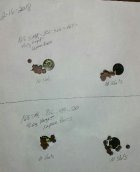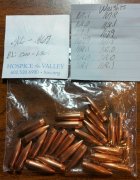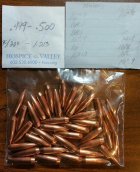It's always fun to experiment and explore, and for accuracy try to get everything you can control as consistent as possible. But many variables are out of the reloaders control. Example the powder burns differently every time in the very same cartridge case. The primer flash is not the same and varies significantly, powders vary widely at the different pressures they are consumed and react differently as pressures increase, and sometimes get sharp increases in pressure or "spikes", hence that powder/bullet combination to be safe has to operate at a lower peak pressure than the others in it's class as it gets "spikey" on the upper end of the pressure curve with that bullet....and thats without even considering the bullet and all its variables,...or the rifle and all it's variables, with bore dimensions, chamber, twist, temperature, the steel it's made from. Not to mention outside exterior influences like wind and temperature. So shooting bullets in the same hole is a giant mixed bag of variables, most are out of your control, but you may get close from time to time. Do you ever wonder if the one or two of the variables helped you to shoot your best tiny group, and not your skill at shooting or wind reading? I tend to think so,... like a slight spike in pressure or off balance bullet jacket, would push the bullet out of the group, but the wind pushed the bullet into the center with the rest of the group...keep experimenting, I do. How valid is all this experimentation? I don't know...so many variables to contend with, to be truly scientific. But this ain't science class, believe in the shot when the trigger breaks, so do whatever you believe works for you and thanks for sharing.














